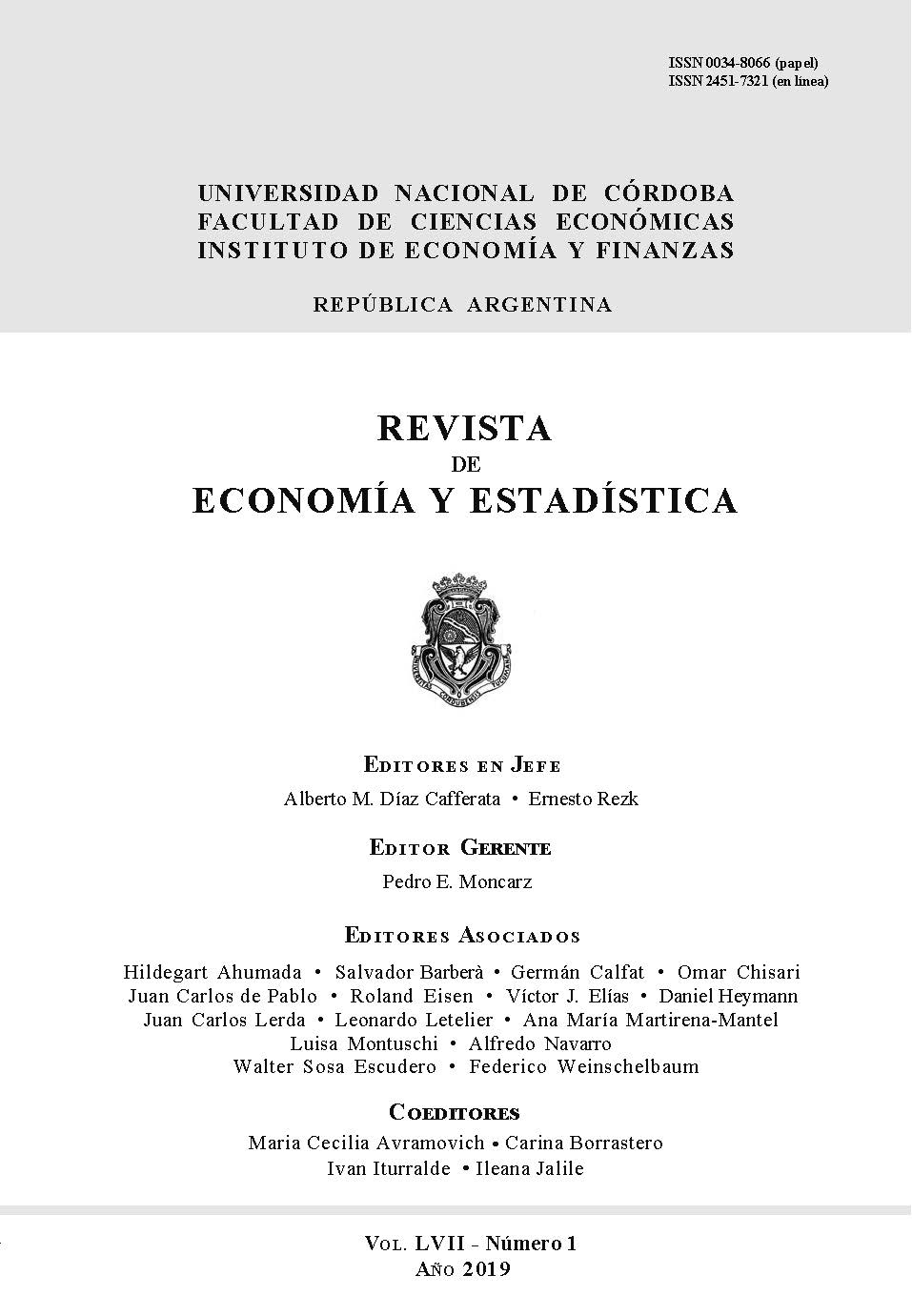Politics and Environmental Law in Neoliberal Times: the case of Hazardous Waste In Córdoba.
DOI:
https://doi.org/10.55444/2451.7321.2019.v57.n1.31314Keywords:
environmental law, environmental politics, neloiberalism, hazardous wasteAbstract
The objective of this article is to highlight what is made invisible by the recurring common sense statements that usually reduce environmental problems to failures in the implementation of regulations or, simply, to the absence of environmental policies in Córdoba, Argentina and, even, the Latin American region. To this end, and in the first place, the so-called “neoliberal environmentalism” will be characterized, highlighting certain historical-political conditions for its emergence and rise as the dominant logic in the environmental field. Then we will address the transformations or redefinitions of law in the framework of the predominance of neoliberalism and the most relevant aspects of neoliberal environmental policy in Argentina in recent decades. Finally, and before presenting certain reflections and contributions or proposals to different operators in the environmental field, the case of environmentally sound management policies for hazardous waste in Córdoba will be briefly presented.
Date received: April 15, 2019
Acceptance date: October 12, 2019
Downloads
References
Acuña, G. (1994). Evaluación de impacto ambiental: algunos efectos jurídicos. Seminario Internacional de Derecho Ambiental, Córdoba, Argentina.
Bugoni, M. y Cañás, C. (1998). Un modelo práctico, reportaje a María Julia. Aportes para el Estado y la Administración Gubernamental, 5(12), 9-14.
Banco Mundial (1995). La contaminación ambiental en la Argentina. Temas y opciones para su gestión (Reporte Nro. 14070-AR).
Basualdo, E. (2011). Sistema político y modelo de acumulación. Cara o Ceca.
Bernstein, S. (2001). The compromise of liberal environmentalism. Columbia University Press.
Bermúdez, G.; Moreno, M.; Invernizzi, R.; Plá, R., & Pignata, M. (2010). Heavy metal pollution in topsoils near a cement plant: The role of organic matter and distance to the source to predict total and HCl-extracted heavy metal concentrations. Chemosphere, 78, 375-381.
Bourdieu, P. (2005). La Fuerza del Derecho: Elementos para una sociología del campo jurídico. Siglo del hombre Editores.
Cafferatta, N. (2009). Instituciones de derecho ambiental latinoamericano. Revista de Derecho Público, 2, 9-46.
CEPAL (1994). Informe de la Reunión Regional Conjunta CEPAL/PNUMA sobre el Manejo Ambientalmente Adecuado de Residuos Peligrosos en América Latina y el Caribe y la Aplicación del Convenio de Basilea.
CEPAL (1995). Medio ambiente y comercio internacional en América Latina y el Caribe. En SELA/UNCTAD, Comercio y medio ambiente. El debate internacional (pp. 63-99). Nueva Sociedad.
Chudnovsky, D. y López, A. (1996). Política tecnológica en la Argentina: ¿hay algo más que laissez faire?. Redes, 3(6), 33-75.
Cubillos, G. (1997). El marco jurídico ambiental. En H. Durán de la Fuente (Comp.), Gestión ambientalmente adecuada de residuos sólidos. Un enfoque de política integral. CEPAL-GTZ.
Estenssoro Saavedra, F. (2014). Historia del debate ambiental en la política mundial 1945-1992. La Perspectiva Latinoamericana. Instituto de Estudios Avanzados.
Foa Torres, J. (2012). Una evaluación crítica de los estudios de políticas públicas ambientales. Hacia un análisis discursivo y de crítica a la ideología de las políticas. Pensamento plural, 9, 98-129.
Foa Torres, J. (2016). Lógica de la gestión ambientalmente adecuada y patrón de desarrollo sustentable en América Latina: el tema emblemático de las políticas de residuos peligrosos en Argentina en los años 90. Luna Azul, 42, 293-318.
Foa Torres, J. (2017a). Ambiente, neoliberalismo y deuda en América Latina. En M. T. Piñero y M. S. Bonetto (Comps.), Tensiones en la democracia argentina: Rupturas y continuidades en torno al neoliberalismo (pp. 155-176). CEA-FCS-UNC.
Foa Torres, J. (2017b). Lógica del riesgo y patrón de desarrollo sustentable en América Latina Políticas de gestión ambientalmente adecuada de residuos peligrosos en la ciudad de Córdoba. Editorial del Centro de Estudios Avanzados (FCS-UNC).
Foucault, M. (2012). Nacimiento de la biopolítica. Fondo de Cultura Económica.
Francisco (2015). Carta Encíclica Laudato Si´ del Santo Padre Francisco sobre el cuidado de la casa común. Vaticano.
Gabaldón, A. y Rodríguez Becerra, M. (2001). Evolución de las políticas e instituciones ambientales: ¿hay motivos para estar satisfechos?. En E. Leff (Coord.), La transición hacia el desarrollo sustentable. PNUMA-UAM.
Hemamala, H.; Martin, P.; Manjula, S. y Wheeler, D. (1994). The Industrial Pollution Projection System (IPPS). Banco Mundial, Departamento de Investigación de políticas, División de ambiente, Infraestructura y Agricultura.
HOLCIM/GTZ (2006). Guía para el Co-Procesamiento de Residuos en la Producción de Cemento. Cooperación Público-Privada GTZ-Holcim. GTZ.
Juliá, M.; del Campo, C. y Foa Torres, J. (2013). Formulación de Políticas Públicas Ambientales. Los casos de Aguas, Bosque Nativo y Residuos Peligrosos. Lerner.
Marí, E. (1984). Problemas abiertos en la filosofía del derecho. Doxa, 1, 159-167.
Rodríguez Becerra, M.; Espinoza, G. y Wilk, D. (2002). Gestión ambiental en América Latina y el Caribe. Evolución, tendencias y principales prácticas. Banco Interamericano de Desarrollo, División Medio Ambiente.
Scholz, I. (1993). Requerimientos ambientales a productos de consumo en Alemania y sus efectos sobre las exportaciones de los países en desarrollo. Instituto Alemán del Desarrollo.
Downloads
Published
Issue
Section
License
Copyright (c) 2019 Jorge Foa Torres

This work is licensed under a Creative Commons Attribution-NonCommercial-NoDerivatives 4.0 International License.
Authors who have publications with this journal agree to the following terms:
Authors retain their copyright and grant the journal the right of first publication of their work, which is simultaneously subject to the Creative Commons Attribution-NonCommercial-NoDerivatives 4.0 International License that allows third parties to share the work provided that its author and first publication in this journal are indicated.
Authors may adopt other non-exclusive licensing arrangements for distribution of the published version of the work (e.g. depositing it in an institutional telematic archive or publishing it in a monographic volume) as long as the initial publication in this journal is indicated.
Authors are allowed and encouraged to disseminate their work via the Internet (e.g. in institutional telematic archives or on their website) before and during the submission process, which can lead to interesting exchanges and increase citations of the published work. (See The Open Access Effect)










